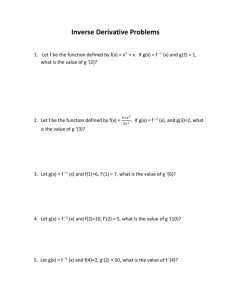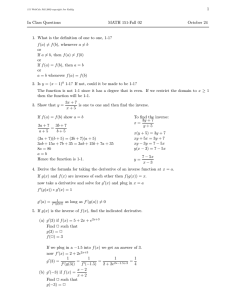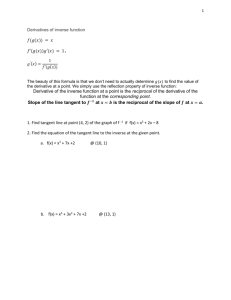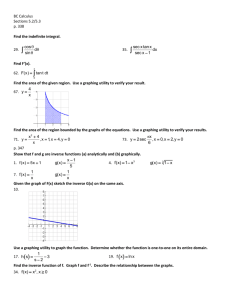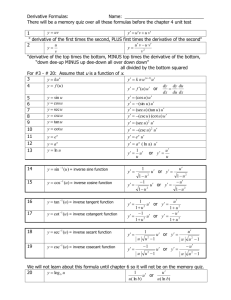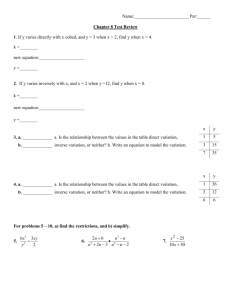Inverse of Derivatives
advertisement
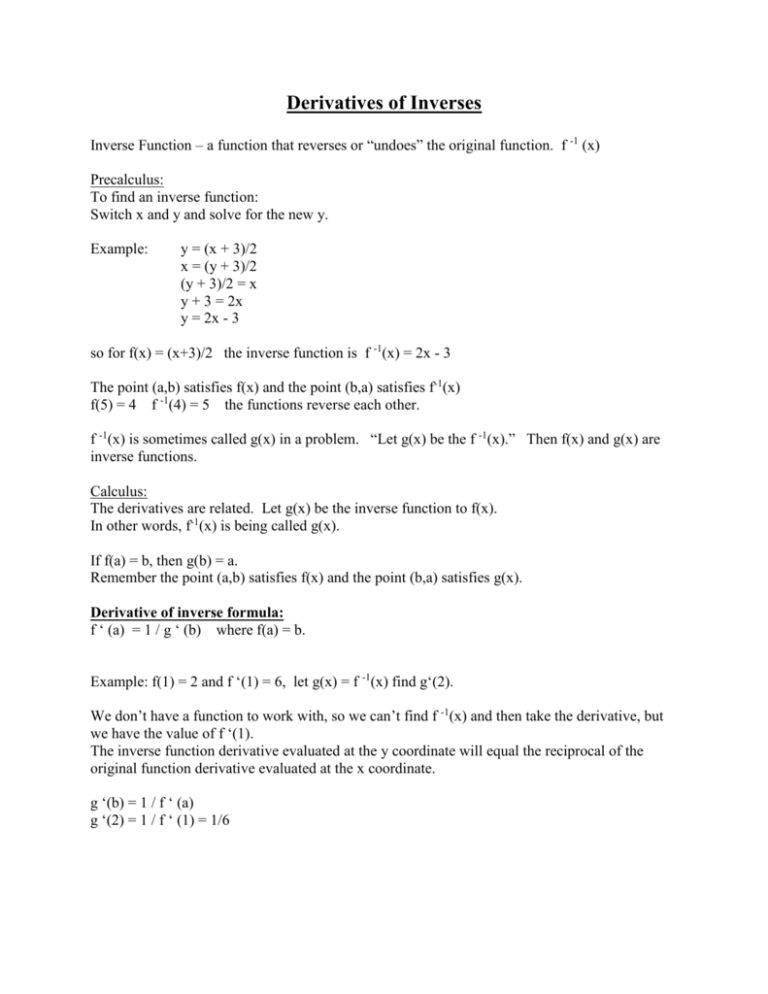
Derivatives of Inverses Inverse Function – a function that reverses or “undoes” the original function. f -1 (x) Precalculus: To find an inverse function: Switch x and y and solve for the new y. Example: y = (x + 3)/2 x = (y + 3)/2 (y + 3)/2 = x y + 3 = 2x y = 2x - 3 so for f(x) = (x+3)/2 the inverse function is f -1(x) = 2x - 3 The point (a,b) satisfies f(x) and the point (b,a) satisfies f-1(x) f(5) = 4 f -1(4) = 5 the functions reverse each other. f -1(x) is sometimes called g(x) in a problem. “Let g(x) be the f -1(x).” Then f(x) and g(x) are inverse functions. Calculus: The derivatives are related. Let g(x) be the inverse function to f(x). In other words, f-1(x) is being called g(x). If f(a) = b, then g(b) = a. Remember the point (a,b) satisfies f(x) and the point (b,a) satisfies g(x). Derivative of inverse formula: f ‘ (a) = 1 / g ‘ (b) where f(a) = b. Example: f(1) = 2 and f ‘(1) = 6, let g(x) = f -1(x) find g‘(2). We don’t have a function to work with, so we can’t find f -1(x) and then take the derivative, but we have the value of f ‘(1). The inverse function derivative evaluated at the y coordinate will equal the reciprocal of the original function derivative evaluated at the x coordinate. g ‘(b) = 1 / f ‘ (a) g ‘(2) = 1 / f ‘ (1) = 1/6

